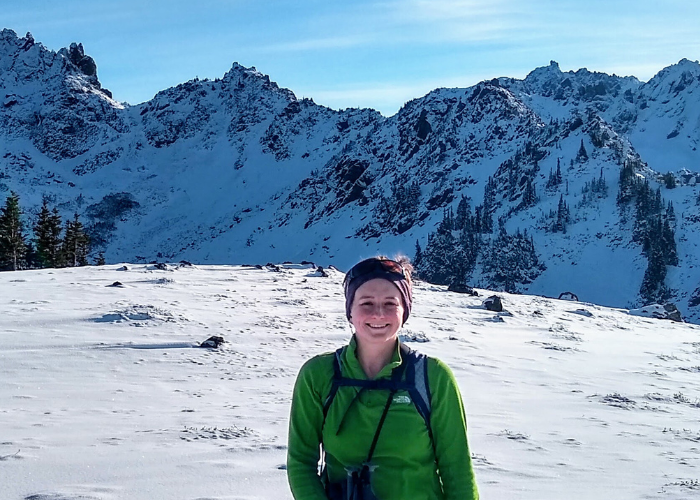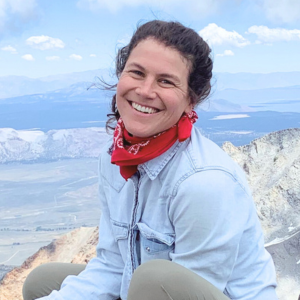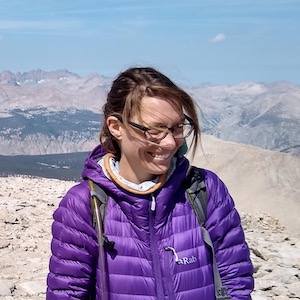IBP is thrilled to welcome Keke Ray to our team! Keke worked for us as a seasonal point count technician in the National Parks of the Pacific Northwest for 3 years and then headed off to Western Michigan University where she earned her masters degree researching Red-winged Blackbird communication with a focus on call repertoire and alarm call combinations. Keke will continue listening for birds in her new role at IBP as an Acoustic Monitoring Specialist as we expand our use of Autonomous Recording Units (ARUs) for bird monitoring.
Which came first your interest in science or birds? Also, when and how did you first get interested in birds?

Keke worked for IBP in North Cascades National Park doing backcountry point counts as part of our work monitoring bird populations for the National Park Service.
I was actually first interested in science and conservation, becoming interested in birds was, honestly, incidental. My first field job was during college; I went to Wyoming for a summer to look for goshawk nests with the Bird Conservancy of the Rockies, which was very physically hard and fun and my first taste of field work as well as bird work. After that I worked some small mammal and vegetation jobs before deciding that I really did enjoy birds the most, particularly as an early bird myself. I worked with Marbled Murrelet and Spotted Owl before I finally found my niche doing point counts with IBP. Learning to ID birds by sight and especially sound was so challenging, so fun, and was the source of endless entertainment and conversations that I never tired of, to this very day!
Where did you grow up?
I grew up in the Upper Peninsula of Michigan (aka, I’m a Yooper). It’s pretty wild up there so I suppose it’s no surprise that I got mixed up with wildlife work. I spent a lot of my childhood tearing around the woods, observing and enjoying nature. I didn’t know my birds then, but I loved inspecting porcupines in trees, watching bats and flying squirrels in the evenings, picking up every snake I could catch, rescuing tadpoles from ditches, counting the number of ticks you had after a walk in the woods – budding biologist stuff.

Socially-distanced point count training at the start of the 2020 field season for the Pacific Northwest bird monitoring crews.
What is your history with IBP?
I first worked with IBP in 2018 on bird population monitoring in Pacific Northwest national parks as a backcountry point count technician. All it took was one field season to know that I had found exactly the kind of work I like – tough and beautiful, in the outdoors and with the added challenge of the species ID; it could have eaten me alive, but I fell hard instead. I came back for the next 3 years (yes, even during the dreaded 2020 COVID season) as the assistant crew lead for the project, helping Mandy Holmgren out. I loved helping folks learn their birds and get acquainted with the project and the land. I loved knowing the work I did mattered, and helped us better understand and conserve birds.
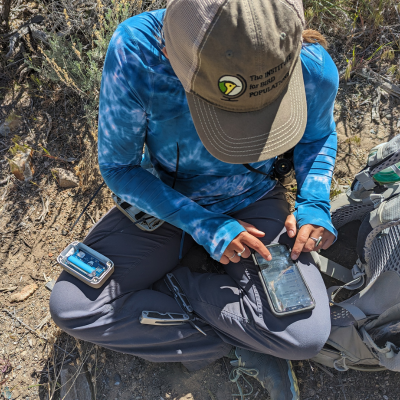
Keke programs an ARU (Automated Recording Unit) in Death Valley National Park.
Can you tell me a bit about the projects you are working on for IBP?
I’m working on a few different projects for IBP that use ARUs to monitor birds including in California's OHV (Off Highway Vehicle) parks and Death Valley National Park, and as support for other ARU projects. Primarily I’m helping to manage, streamline, process, and verify the huge quantities of acoustic data gathered by ARU deployments, as well as ground truthing those data in the field with point counts. ARUs collect so much data and the toughest part is keeping it organized and going through it all!
What is your favorite bird and why?
I have so many favorite birds – they are mood/location/feature dependent! Hermit Thrush song is my favorite – it reminds me of the UP (Upper Peninsula.) I also adore Pacific Wrens because they are bouncy and love the cool, wet forest, and are visually reminiscent of a favorite food: the decadent chocolate truffle.
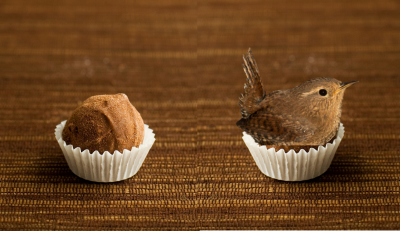
Composite image including a stock photo and Pacific Wren photo by Julio Mulero.
Do you have a nemesis bird? If so, what species and why?
Historically, it has been the House Wren. Don’t ask me why, but when I first started learning my birds, my IDing mind was reduced to a vague buzzing and big ? every time I heard their bubbly song. This was a very consistent and moderately embarrassing occurrence. These days I ID them with a vigor few have for the House Wrens because by golly, we’ve met.
Do you have any hobbies?
I love to trail run, hike, backpack with my buds, hunt for snow to play in, try new bakes, read science fiction, and eat ungodly amounts of chocolate.


